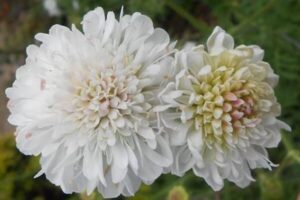Courtesy of the Irish Examiner and The Guardian

People are being urged to keep rare plants in their living rooms or gardens to help create volunteer collections that can save pollinator-friendly plants from becoming extinct.
Plant Heritage, a UK-based charity that works to keep rare garden flowers growing even when they are out of fashion, has started a campaign to protect pollinator-friendly plants and is asking for volunteers to set up a collection.
The Irish Garden Plant Society is an affiliated group of Plant Heritage.
Though some collections are large and housed at such esteemed locations as Kew Gardens and RHS Wisley, many are kept in the front porches and back gardens of amateur enthusiasts.
Plant Heritage has been running a “missing genera” campaign since 2016, where it lists plants that are not yet part of a collection and are thus at risk of dying out. This year the plants are all pollinator-friendly.
There are 700 collections in total, found all over Britain, Ireland, and the Channel Islands. These ‘living libraries’ contain an estimated 95,000 garden plants.
This year’s list includes brightly-coloured echinacea; osmanthus, which boasts nectar-rich jasmine-like flowers come spring; and gaura, recently reclassified as Oenothera (G), which is known for attracting bees.
Gill Groombridge, a Plant Heritage business manager, said: “Many of our national plant collections are held in homes or in small conservatories, so you don’t necessarily need lots of space in order to help.”
All that is needed is a passion for plants and an eagerness to learn about the plant group in the chosen collection, she said: “Anyone who wants to be a national plant collector needs to learn how to grow the plants, keep records of the plants, and be able to look after plants for the long-term future. We want someone who is passionate about the plant group so they’ll keep collecting, keep finding information to keep learning about that plant group, and sharing information with others.”
Though the plants are mostly not native, it is still important to protect them, she said, particularly because, as the climate changes, a diversity of plants is needed for different pollinators and to store carbon.
“Some plants go in and out of fashion, putting some at risk, but it’s good to keep the diversity going. We could find that some of these flowers deal well with pests and diseases and provide nectar for pollinators. Some plants may help us for medicinal purposes, and you never know quite what they might be good for.
“Rather than everyone buying exactly the same plant, having exactly the same plants in their garden, having the variety of plants in your garden is very good for climate resilience, and good for the pollinators, for the local ecosystems in your own gardens.”
: With large yellow flowers in late spring and summer, these North American cacti will survive in a cool glasshouse if kept dry. International plant breeders have created many highly ornamental hybrids and cultivars, too.
: Also known as bellflowers, these distinctive open, bell-shaped flowers can be blue, pink, purple or white. There are about 80 species and 232 cultivars available.
: These dramatic foliage plants can be grown outside in a warm, sheltered spot, or in greenhouses or conservatories. There are 19 cultivars available.
: Known for attracting bees, birds, and other pollinators, these hardy, herbaceous perennials have about 200 cultivars listed on the RHS Plantfinder.
: There are around 45 species and cultivars available across Britain and Ireland which either flower in spring and early summer or in the autumn. Some have edible berries.
: Related to daisies, Erigeron can be annuals, biennials, or perennials. They thrive in sunny spots with some happily growing through the cracks in paving.
: Known for attracting bees, these drought-tolerant, deciduous perennials flower for a long period at the end of summer and into autumn. They are mostly in shades of pink and white.
: A magnet for bees and butterflies, this plant group can be found growing wild in meadows here and is also a cottage garden favourite.
: From creeping, ground-cover plants to stately perennials, this genus can survive in a variety of settings.
: These hardy evergreen shrubs with attractive foliage are easy to grow, and thrive in either sun or shade. There are 17 cultivars and 10 species available in Britain and Ireland.
: These are low-growing evergreen shrubs but are often treated as perennials. The tubular flowers are held on long stems and come in tones of pink, red, and occasionally yellow, and will last from mid-summer into the autumn.
: These wildflowers are also known as campion and catchfly, and other species range from alpines to border perennials. With shades of pink, lilac, white, and red, they bloom from late spring through to early summer.
